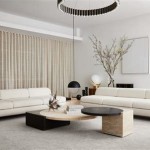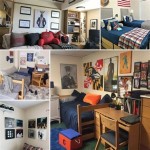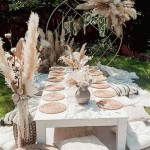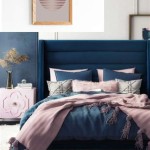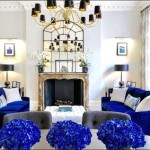Decorating Big Living Room Ideas: Maximizing Space and Style
Decorating a large living room presents both exciting opportunities and unique challenges. The sheer volume of space can feel overwhelming, potentially leading to a room that feels cold and impersonal. However, with careful planning and consideration of design principles, a large living room can become a welcoming, functional, and stylish centerpiece of the home. This article explores key decorating ideas for maximizing space and creating a cohesive aesthetic in a large living room.
The initial phase involves assessing the room's architectural features, natural light sources, and intended use. This assessment forms the foundation for subsequent design decisions. Consideration should be given to the room's dimensions, the placement of windows and doors, and any existing focal points, such as a fireplace or large picture window. Understanding the room's inherent characteristics allows for a design plan that complements and enhances its existing strengths.
Furthermore, determining the room's primary function is crucial. Will the living room primarily serve as a space for entertaining, a family gathering area, a home theater, or a combination of these uses? Defining the room's purpose will influence furniture selection, layout, and overall design choices. For example, a living room intended for frequent entertaining may require a more formal seating arrangement and ample space for circulation, while a family-oriented living room might prioritize comfortable seating and entertainment options.
Strategic Furniture Placement and Zoning
One of the most significant aspects of decorating a large living room is strategic furniture placement. The goal is to create a sense of intimacy and connection within the vast space. Avoid pushing all furniture against the walls, as this can make the room feel even larger and less inviting. Instead, consider creating distinct zones for different activities.
Zoning involves dividing the large living room into smaller, more manageable areas based on function. For example, one zone might be dedicated to conversation, featuring a sofa, armchairs, and a coffee table. Another zone could serve as a reading nook, with a comfortable chair, a floor lamp, and a bookshelf. A third zone might be designed for entertainment, with a television, media console, and comfortable seating. Defining these zones helps to break up the space and create a more intentional and functional layout.
Anchoring each zone with a rug is an effective way to visually define the space and create a sense of cohesion. The rug should be large enough to accommodate all the furniture within the zone, with at least the front legs of the furniture resting on the rug. This helps to ground the furniture and create a unified look. Consider using different rug patterns and colors in each zone to further differentiate the areas and add visual interest.
When selecting furniture, scale is critical. Choose pieces that are appropriately sized for the large space. Small, delicate furniture can easily get lost in a large living room, making the room feel unbalanced. Opt for larger sofas, armchairs, and coffee tables that can hold their own in the space. Consider using sectional sofas to provide ample seating and define the conversation area. Oversized lamps and accessories can also help to fill the space and create a sense of grandeur.
Creating pathways for movement is essential to ensuring the living room is functional and easy to navigate. Avoid placing furniture in a way that obstructs walkways or makes it difficult to move around the room. Leave ample space between furniture pieces to allow for comfortable circulation. This will create a more inviting and user-friendly space.
Color Palette and Texture
The color palette plays a critical role in setting the mood and creating visual interest in a large living room. Light and airy colors can make the room feel even larger and more spacious, while darker colors can create a more intimate and cozy atmosphere. The choice of color palette should be based on the desired effect and the room's natural light. Consider the architectural style of the home and the existing furnishings when selecting colors.
A neutral color palette can be a safe and versatile option for a large living room. Neutral colors, such as beige, gray, and white, create a calming and sophisticated backdrop that allows for pops of color in the accessories and artwork. A neutral palette also provides a blank canvas that can be easily updated and changed over time. To prevent a neutral color scheme from feeling bland, add texture through the use of different materials and finishes.
Introducing accent colors can add visual interest and personality to the living room. Accent colors can be used on accent walls, throw pillows, rugs, and artwork. Choose accent colors that complement the neutral color palette and reflect personal style. Consider using colors that are opposite each other on the color wheel to create a dynamic and visually appealing contrast.
Texture is crucial in adding depth and interest to a large living room. Incorporate different textures through the use of various materials, such as wood, metal, glass, fabric, and leather. Use textured fabrics for upholstery, curtains, and throw pillows. Add a natural fiber rug or a textured coffee table to create visual and tactile interest. Layering different textures creates a more inviting and engaging space.
Wall treatments can also add texture and visual interest to a large living room. Consider using wallpaper, wainscoting, or paneling to add depth and dimension to the walls. These treatments can help to break up the large expanse of wall space and create a more intimate and inviting atmosphere. Stone or brick accents can also add a rustic and textural element to the room.
Lighting and Accessories
Lighting is a crucial element in creating a welcoming and functional living room. In a large living room, it is essential to layer different types of lighting to create a well-lit and inviting space. Consider using a combination of ambient lighting, task lighting, and accent lighting to achieve the desired effect.
Ambient lighting provides overall illumination for the room. This can be achieved through the use of recessed lighting, chandeliers, or large pendant lights. Ambient lighting should be bright enough to illuminate the entire room but not so harsh that it creates glare. Dimmers can be used to adjust the brightness of the ambient lighting to suit different activities and moods.
Task lighting provides focused illumination for specific tasks, such as reading or working. This can be achieved through the use of floor lamps, table lamps, or desk lamps. Place task lighting in areas where it is needed, such as next to a reading chair or on a desk. Choose lamps that provide adequate light for the task at hand without creating glare.
Accent lighting is used to highlight specific features of the room, such as artwork, architectural details, or decorative objects. This can be achieved through the use of spotlights, track lighting, or wall sconces. Use accent lighting to draw attention to the areas that are most important to the overall design of the room.
Accessories are essential for adding personality and style to a large living room. Choose accessories that reflect personal taste and complement the overall design of the room. Consider using artwork, sculptures, plants, books, and decorative objects to add visual interest and create a more inviting space.
Large-scale artwork can be particularly effective in a large living room. Choose pieces that are appropriately sized for the space and that complement the color palette and style of the room. Hang artwork at eye level to ensure that it is easily viewed. Consider creating a gallery wall to showcase a collection of smaller pieces.
Plants are a great way to add life and vibrancy to a large living room. Choose plants that are appropriate for the room's lighting conditions and that complement the overall design of the room. Consider using large potted plants to fill empty corners or to create a green wall. Plants can help to purify the air and create a more relaxing and inviting atmosphere.
Mirrors can be used to reflect light and create the illusion of more space in a large living room. Place mirrors strategically to reflect natural light from windows or to highlight specific features of the room. Consider using a large mirror above a fireplace or on an accent wall to create a focal point.
By carefully considering furniture placement, color palette, lighting, and accessories, a large living room can be transformed into a welcoming, functional, and stylish space. The key is to create distinct zones, use appropriately sized furniture, layer different textures, and incorporate personal touches that reflect individual style and preferences.

10 Tips For Styling Large Living Rooms Other Awkward Spaces The Inspired Room

13 Tricks To Decorating A Large Living Room

10 Tips For Styling Large Living Rooms Other Awkward Spaces The Inspired Room

How To Decorate A Large Living Room Ruggable Blog

13 Strategies For Making A Large Room Feel Comfortable

Design Big 23 Large Living Room Decor Ideas Rugs Direct
Interior Designers Reveal The Mistakes You Re Making In A Living Room

10 Tips For Styling Large Living Rooms Other Awkward Spaces The Inspired Room

Interior Design Ideas Large Living Room

How To Decorate A Big Blank Wall Sanctuary Home Decor
